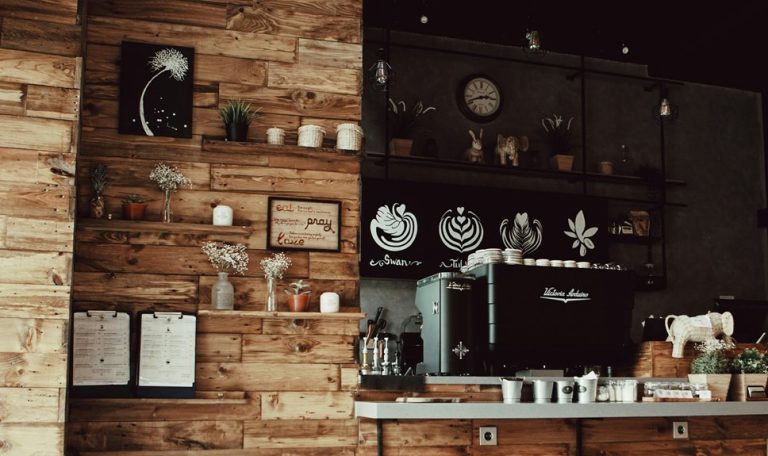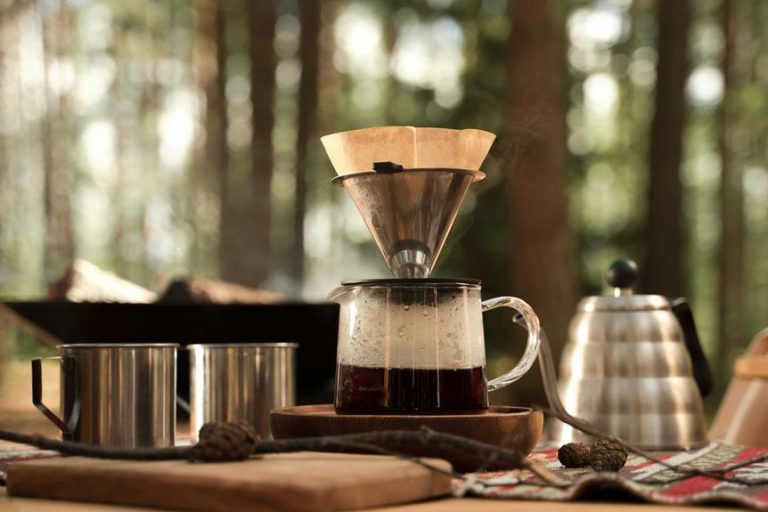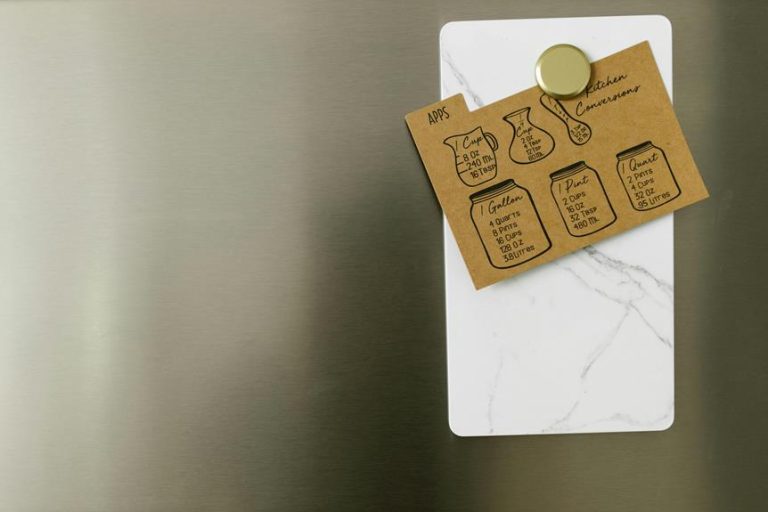Low Caffeine Coffee: Best 15 Options for Lighter Brews

As we explore the world of low caffeine coffee, we'll find that there are plenty of delightful options for those of us who prefer lighter brews without compromising on taste. From the intricacies of Swiss Water Process varieties to the vibrant notes in specialty light roasts, there's a range of flavors waiting to be discovered. We've compiled a list of the best 15 options that cater to different preferences and needs. So, what makes these selections stand out, and how can we enhance our coffee experience while keeping it light?
Swiss Water Process Coffee
When we think about low caffeine coffee options, Swiss Water Process Coffee stands out as a popular choice for those looking to enjoy a rich flavor without the jitters.
This method focuses on caffeine extraction using water, allowing us to savor the beans' natural essence.
Decaf Coffee Varieties
Exploring the world of decaf coffee varieties opens up a treasure trove of flavors and aromas that many may not realize exist.
With diverse decaf origins, like Colombian and Brazilian beans, we can appreciate unique profiles.
The decaf processing methods, such as the Swiss Water Process, enhance these characteristics while reducing caffeine.
Together, they create enjoyable brews for all coffee lovers seeking lower caffeine options.
Light Roast Coffees
When we consider light roast coffees, we immediately notice their unique flavor profiles that often highlight bright, fruity notes.
By exploring various brewing techniques, we can enhance these flavors, creating a truly enjoyable experience.
Plus, the health benefits associated with lower caffeine levels make light roasts an appealing choice for many coffee lovers.
Flavor Profile Exploration
Light roast coffees offer a vibrant flavor profile that captivates our senses with their bright acidity and complex notes.
During our coffee tasting sessions, we notice how the aroma evaluation reveals hints of citrus, floral undertones, and even subtle sweetness.
These characteristics make light roasts an exciting choice, inviting us to explore the nuanced flavors that each cup has to offer.
Brewing Techniques Overview
To release the full potential of light roast coffees, we need to pay close attention to our brewing techniques.
Adjusting the grind size can greatly impact brew strength, allowing us to highlight those delicate flavors. A coarser grind often results in a milder cup, while a finer grind can intensify the taste.
Let's experiment to find our perfect balance for an enjoyable brew!
Health Benefits Highlighted
With a focus on health benefits, we can appreciate how light roast coffees stand out among their darker counterparts.
These lighter brews pack impressive antioxidant properties, which help combat oxidative stress.
Additionally, the lower caffeine content can support mental health by reducing anxiety levels.
Low Caffeine Blends
As we explore low caffeine blends, we'll uncover the health benefits they offer alongside their unique flavor profiles.
It's fascinating how different brewing techniques can enhance these characteristics, allowing us to enjoy a satisfying cup without the jitters.
Let's discuss how these blends can fit seamlessly into our daily routines while still delivering a rich coffee experience.
Health Benefits Overview
When we explore low caffeine coffee blends, we uncover a range of health benefits that can enhance our daily routine.
These blends typically contain less caffeine, reducing anxiety and promoting better sleep.
Additionally, they can still provide antioxidants, supporting overall wellness.
Flavor Profiles Explained
Low caffeine coffee blends offer a delightful variety of flavor profiles that can surprise even the most seasoned coffee drinkers.
During our taste testing sessions, we've discovered bright, fruity notes and subtle nuttiness that complement various coffee pairings.
Exploring these blends opens up new avenues for enjoyment, allowing us to savor unique flavors without the jitters, making every sip a memorable experience.
Brewing Techniques Tips
Exploring the delightful flavor profiles of low caffeine coffee blends naturally leads us to contemplate how brewing techniques can enhance these unique tastes.
Here are three effective brewing methods we can use:
- Cold Brew: This method extracts smooth flavors while reducing acidity.
- Pour Over: It allows for precise control over extraction.
- French Press: This technique provides a rich, full-bodied experience.
Let's experiment and savor!
Specialty Low Caffeine Brands
Specialty brands are redefining our coffee experience with their unique low caffeine offerings that cater to those who seek a gentler brew without sacrificing flavor.
These brands showcase low caffeine innovations through meticulous specialty coffee sourcing, ensuring we enjoy delightful tastes while minimizing our caffeine intake.
Arabica vs. Robusta
When it comes to coffee, the choice between Arabica and Robusta can greatly impact our brewing experience.
Let's explore some key differences:
- Arabica advantages: Smoother, richer flavor profiles with higher acidity.
- Robusta characteristics: Stronger, bolder taste with a hint of nuttiness and more caffeine.
- Versatility: Arabica's ideal for light brews, while Robusta shines in espresso blends.
Choosing wisely can elevate our coffee enjoyment!
Cold Brew Options
After considering the differences between Arabica and Robusta, we can now appreciate how these beans can influence our cold brew choices.
Utilizing various cold brew techniques, we can extract distinct flavors and aromas. Popular cold brew brands like Stumptown and Chameleon offer low caffeine options, allowing us to enjoy a revitalizing beverage without the jitters.
Let's explore these delicious alternatives together!
Coffee Alternatives
Exploring diverse coffee alternatives can open up a world of flavors and experiences beyond our traditional brews.
For those of us managing caffeine sensitivity, these options offer a revitalizing twist on coffee culture:
- Herbal teas – soothing and caffeine-free.
- Chicory root coffee – a nutty, roasted flavor.
- Barley coffee – rich and malty.
Let's embrace these alternatives and discover new favorites!
Low Caffeine Espresso
Often, we find ourselves craving the rich, bold essence of espresso without the jitters that usually accompany it.
Low caffeine espresso offers a delightful compromise, allowing us to savor that robust flavor while enjoying low caffeine benefits like reduced anxiety and improved sleep.
Exploring various espresso alternatives, we can discover blends that provide satisfying taste without overwhelming our systems.
Let's sip smartly!
Herbal Coffee Substitutes
Many people are discovering the unique world of herbal coffee substitutes as an excellent alternative to traditional brews.
These herbal blends not only provide a caffeine-free experience but also offer diverse flavors.
Here are three popular coffee alternatives to explore:
- Chicory root
- Dandelion root
- Roasted barley
Let's explore these options and see how they can enhance our coffee experience!
Flavored Low Caffeine Coffees
Flavored low caffeine coffees offer a delightful way to enjoy the rich taste of coffee without the jitters associated with higher caffeine content.
We can savor options like vanilla hazelnut, caramel macchiato, and chocolate almond.
Seasonal favorites like pumpkin spice and spiced chai, along with indulgent choices such as raspberry mocha and coconut cream, make every cup a unique experience, reminiscent of blueberry muffins and cinnamon rolls.
Single-Origin Low Caffeine
When we explore single-origin low caffeine coffees, we discover a rich tapestry of unique flavor profiles that reflect their specific regions.
These coffees not only tantalize our taste buds but also highlight the importance of responsible sourcing and sustainability practices.
Flavor Profiles Explored
Exploring the flavor profiles of single-origin low caffeine coffees opens up a world of unique tasting experiences that can delight our palates.
Here are three key aspects to contemplate:
- Tasting Notes: Expect vibrant hints of fruit or floral undertones.
- Flavor Complexity: Different regions offer varied flavor layers.
- Balance: Low acidity enhances the smoothness of each cup.
Together, these elements create a rich coffee journey!
Sourcing and Sustainability
As we savor the unique flavor profiles of single-origin low caffeine coffees, it's important to contemplate how these selections are sourced and their impact on sustainability.
By prioritizing ethical sourcing, we support farmers who practice sustainable methods. These practices not only preserve the environment but also enhance the quality of our coffee.
Together, we can enjoy our brews while promoting a healthier planet.
Instant Low Caffeine Coffee
For those of us looking to cut back on caffeine without sacrificing the convenience of a quick coffee fix, instant low caffeine coffee offers a practical solution.
Here are some instant coffee benefits we can enjoy:
- Quick preparation
- Variety of low caffeine brands
- Easy to store and transport
These options let's savor coffee moments while managing our caffeine intake.
Organic Low Caffeine Choices
When we consider organic low caffeine coffee options, we're not just looking at reduced caffeine levels; we're also exploring the health benefits of organic farming practices.
These sustainable methods not only yield a cleaner cup but can also enhance the flavor profiles we experience.
Together, let's discover how these choices can elevate our coffee ritual while supporting the environment.
Health Benefits of Organic
Choosing organic low caffeine coffee options not only reduces our daily caffeine intake but also offers a wealth of health benefits that can enhance our overall well-being.
Here are three key health impacts of organic choices:
- Fewer pesticides: Organic certifications guarantee minimal chemical exposure.
- Rich antioxidants: Organic beans often contain higher antioxidant levels.
- Better flavor: The natural growing process enhances taste without harsh additives.
Sustainable Farming Practices
Embracing sustainable farming practices in our quest for low caffeine coffee not only supports the environment but also guarantees the quality of the beans we enjoy. By choosing options that focus on sustainable sourcing and eco-friendly practices, we can relish our brews with a clear conscience. Here's a quick overview of some key sustainable practices:
| Practice | Description | Benefit |
|---|---|---|
| Organic Farming | Avoids synthetic pesticides | Healthier ecosystems |
| Shade Grown Coffee | Grows under canopy trees | Preserves biodiversity |
| Water Conservation | Efficient use of water resources | Supports local habitats |
Flavor Profiles to Explore
Sustainable farming not only enhances the quality of low caffeine coffee but also opens the door to a variety of unique flavor profiles.
Let's explore some enticing options:
- Nutty undertones paired with chocolatey tasting notes.
- Fruity notes that complement floral flavor pairing.
- Spicy hints balanced with a smooth finish.
These combinations can elevate your coffee experience, making it both enjoyable and memorable.
Tips for Brewing Low Caffeine
Brewing a delicious cup of low caffeine coffee can be a rewarding experience, especially when we grasp a few key tips to enhance our brew.
We should pay attention to the brewing temperature, ideally between 195°F and 205°F, to extract flavors without bitterness.
Additionally, adjusting our grind size is essential; a coarser grind often yields a smoother, milder cup.
Let's experiment and enjoy!
Conclusion
In exploring the world of low caffeine coffee, we've discovered a delightful range of options that cater to our diverse tastes. From the smoothness of Swiss Water Process decaf to the vibrant notes of light roasts, there's something for everyone. As we embrace these lighter brews, we can enjoy flavorful coffee without the jitters. So, let's experiment with different blends and brewing methods, and savor the unique experiences that low caffeine coffee has to offer!






